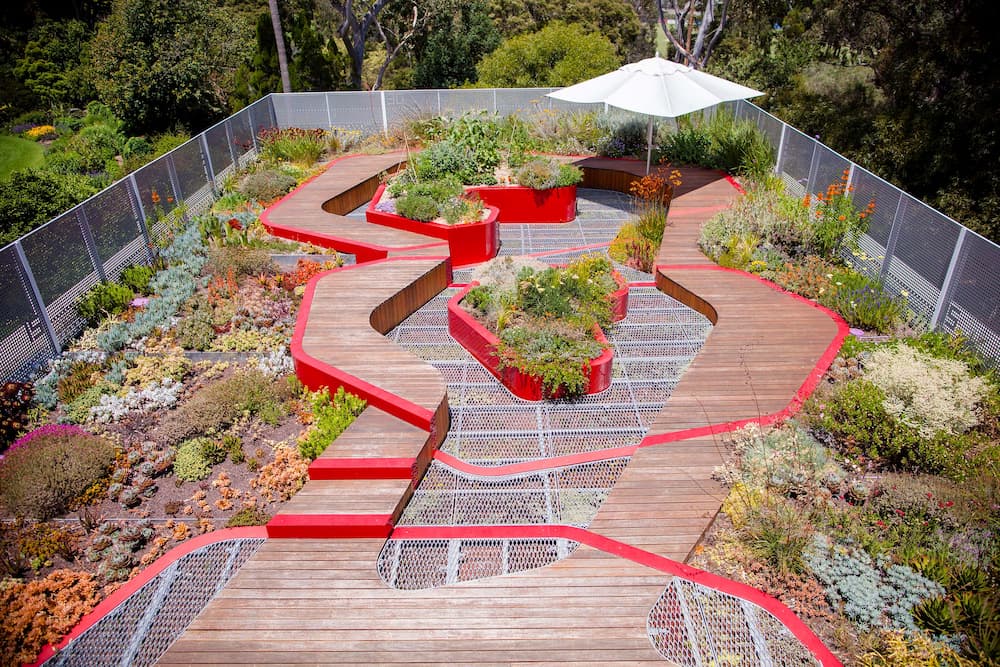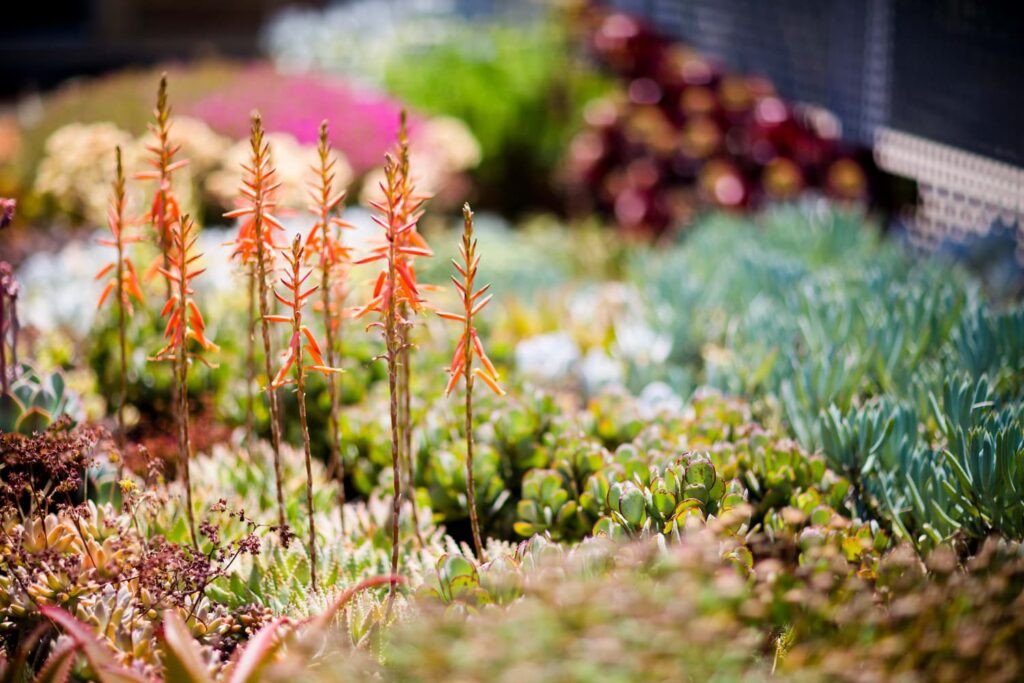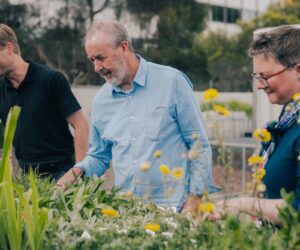New Green Roof Plant Guide Aims High
Australia’s growing passion for rooftop gardens has been given a boost with a new plant guide to help urban gardeners and landscape designers create a luscious and environmentally friendly oasis above their heads.
The comprehensive free guide, developed by researchers at the University of Melbourne, will help ensure the gardens will thrive under Australia’s demanding conditions, with tips for drought-tolerant succulents, robust perennials and spectacular flowering annuals.
Green roofs can help cool our cities and reduce air pollution, enhance biodiversity, optimise management of stormwater, and provide much needed respite for city dwellers.
Associate Professor John Rayner, lead author and urban horticulture expert, said functional green roofs will provide the most social and environmental benefits when the right plants for challenging Australian conditions are used.
“A lack of knowledge has been a barrier to the uptake of green roofs as they tend to be hotter, drier and windier than at ground level, creating challenging conditions for plants to thrive,” Associate Professor Rayner said.
The Burnley Green Roof Plant Guide is free and easy to follow, with information and images on 180 plants for different green roof types, drawing on over 15 years of research and plant trials of hundreds of Australian and exotic species at the University’s Burnley campus.
The guide lists the best plants for different green roofs ranging from shallow, lightweight systems for stormwater benefits through to more complex green roofs for amenity and wellbeing. While aimed primarily at architects, planners, landscape architects and designers, the guide can be used by anyone interested in considering green roofs.
In addition to recommended plant species and palettes, the guide includes case studies of exemplary green roofs, including Victoria’s Parliament House, Sky Park in Melbourne Quarter and a rooftop urban farm.
Michael Casey, Director of Evergreen Infrastructure, a green infrastructure consultancy, said the guide would help gardeners select the right plants to match site conditions and deliver great design outcomes.
“There’s very little knowledge about what types of plants do well on green roofs. It’s different to gardening at ground level. This guide will help green roof practitioners and designers as it includes tried and tested green roof species that do well under Australian conditions,” Mr Casey said.
The Burnley Green Roof Plant Guide and related research program have been funded through the Hort Innovation Hort Frontiers Green Cities Fund, with support from the City of Melbourne and the Victorian State Government.
“Programs such as Hort Innovation’s Green Cities Fund are essential in developing solutions to the challenges of rapidly warming, and drying, climate and ensuring we have liveable cities,” Associate Professor Rayner said.
“We encourage designers to use the guide in their green roof designs and build on this knowledge by adding plantswith similar traits and from habitats that match green roof conditions.”
The Burnley Green Roof Plant Guide is the culmination of years of experiments by University of Melbourne researchers and observations of plants on green roofs in Australia and internationally. Co-authors are Associate Professor Claire Farrell, Professor Nick Williams and Dr Rachael Bathgate.






